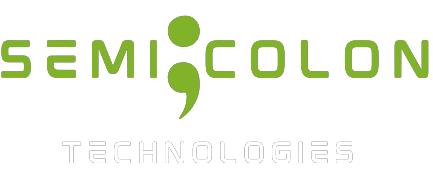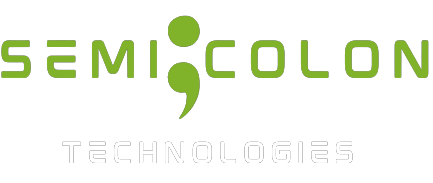
Optimizing Content for Search: A Step-by-Step Guide
- Semicolon
- November 7, 2023
- All Blogs, Digital Marketing, SEO Services
- 0 Comments
SEO and content are powerful individually, but the best results come from combining the two. It’s more than just optimizing content; it’s adopting a unified SEO content plan. When we talk about content search optimization, we typically focus on the expected steps:
- Select a Keyword
- Use it in your:
- Title tag
- Meta Description
- Header Tags
- Copy
- Image file name
While these steps still matter, achieving better results today requires more effort. To truly integrate SEO and content into your strategy, they must work together seamlessly.
How to achieve better content results:
Start by understanding your audience.
- Who is your target audience?
- What interests them?
- What questions do they have?
- Which terms do they use for your topics?
- Are these different from your terms?
If there’s a disparity, adapt your language to theirs, even if it’s not your usual business terminology. The primary objective of your content should always be to provide value to your audience. To build trust and develop reliable resources, your content must cater to your audience’s needs, encouraging return visits and sharing. This can ultimately help your business grow.
How to integrate SEO and content effectively:
Begin brainstorming after identifying your target audience for the content piece.
Generate ideas by:
- Brainstorming creative concepts
- Checking SERPs for audience-relevant terms and aligning your content with search intent
- Utilizing your preferred SEO keyword research tool for inspiration
Exploring keywords related to your core products or services. Addressing common questions asked by your ideal customers, a valuable starting point for content creation.
Step 1: Research your topic
Utilize various search features and tools like:
- Autocomplete
- Related Search
- People also ask
- Answer The Public
- Quora
- Social Media
- Hastags
- Searches
- Groups
Explore the questions asked in topics relevant to your business. Identify the target audience, their inquiries, and the essential information they need to make informed decisions.
Step 2: Research your keywords
Once you have a topic based on research, it indicates people’s online interest.
Now, revisit the keyword research tool to select the most suitable keyword for your content. Choose a keyword with a good chance of ranking. Ensure it closely relates to your chosen topic, products, or services.
Step 3: Writing
Now, it’s time to start writing. You’ve identified the interest and demand for your topic, and you’ve chosen a keyword that can boost your Google ranking.
Focus on creating valuable content tailored to your target audience. Address their needs and questions. Don’t obsess over word count or paragraphs; instead, prioritize adding value and providing helpful answers. Your understanding of your customers’ inquiries should guide your content.
Writing Tips
Avoid lengthy, unreadable text. Readers disengage quickly. Enhance readability by using:
- Headers (H2s/H3s)
- Lists (ordered/unordered)
- Images and videos
- White space
Don’t force keywords or focus on word count. Edit for clarity, grammar, and readability. Read aloud to spot issues. To outrank competitors, provide superior, valuable, and comprehensive content that addresses audience questions naturally. In essence, tell the story and deliver value for better content.
Avoid unnecessary filler. Don’t fixate on keyword frequency; forced writing won’t yield desired results. Edit for clarity and adhere to grammar rules. Reading aloud helps identify issues like keyword stuffing. To outperform competitors, ensure your content is valuable, comprehensive, and superior. Address all audience queries naturally. In summary, tell a compelling story, deliver value, and let your piece evolve naturally for superior content.
Step 4: Enhance
It’s time to optimize your content. Once you’ve chosen a keyword, incorporate it into these SEO elements:
- Title Tag
- Meta Description
- Copy
- Header Tags
- Image file name (use hyphens between words)
- URL
Ensure your content is optimized following SEO best practices. If you’ve selected an engaging topic, a keyword suitable for your website’s ranking, written for your audience, and provided substantial value—without filler—you should start observing positive outcomes.
Optimization Guidelines:
- Link to other relevant pages on your website to provide more resources for your audience and enhance their understanding of the topic.
- Regularly revisit your optimization efforts. Keep updating your content periodically or seize opportunities to boost a piece's keyword rankings. Refreshing older content can sometimes result in improved rankings.
Quality Content is Key for SEO Success
In the realm of SEO, producing content is not enough; it must be valuable and informative for your audience. Approach SEO as a cohesive campaign, focusing on your audience’s needs. Create a strategic plan that covers interconnected and relevant topics, ensuring your content is engaging and useful. Linking related items enriches the user experience and enhances your SEO efforts. For specialized assistance with your SEO content projects, reach out to Semicolon Technology by clicking here.
Related Posts
- Semicolon
- November 3, 2023
2023 SEO Trends: Boosting Your Online Visibility
Navigating the Digital Landscape in 2023 Success in the ever-changing digital marketing world r ..
- Semicolon
- November 7, 2023
Google has finished rolling out its helpful content update.
The update was finished on September 9th. Google confirmed the completion of the helpful conten ..





